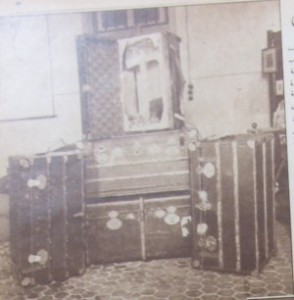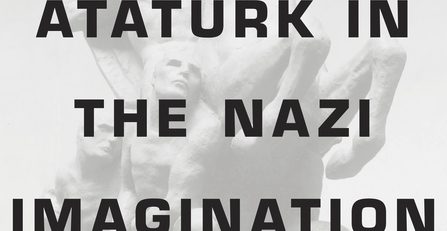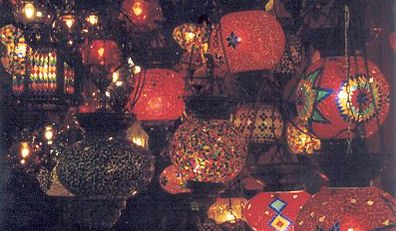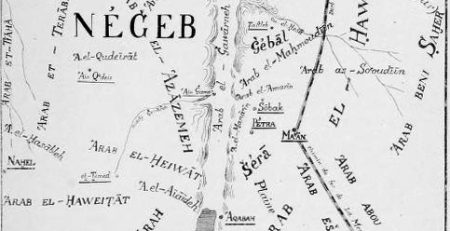The Criminalization of Hashish Consumption in the Middle East
by Liat Kozma
The debate over the legalization of cannabis refuses to die out. In Israel, as in other countries, individuals, organizations, and political parties are taking action to legalize cannabis. But why is cannabis illegal, while other psychotropic substances such as alcohol, nicotine, and coffee are tolerated? The familiar explanations are drawn from the American historical context. One explanation states that tobacco manufacturers, pharmaceutical firms, and even hemp producers have defended the legality of certain substances, but have supported the criminalization of cannabis. Another explanation links the prohibition of cannabis to alcohol prohibition in the United States. Whereas the prohibition of alcohol ended, cannabis, which did not enjoy a powerful lobby, remains illegal. A third explanation is linked to the Americans’ loathing, at the beginning of the twentieth century, of the Mexican immigrants who brought marijuana with them—a linkage that further delegitimized cannabis consumption.

A convoy of smugglers of hashish. Source: The Egyptian newspaper Al-Dunia Mansoura, 1930).
These explanations are important for an understanding of the history of cannabis, if only for the centrality of the United States in twentieth century war on drugs. Cannabis and its products, nevertheless, have another history, closer to home, which is essential for completing the picture.
Egyptians produced and consumed hashish for hundreds of years. However, in about 1880, the cultivation, sale, and consumption of cannabis were outlawed in Egypt. The Egyptian authorities burned cannabis fields and mercilessly raided coffee houses that served the substance. The prohibition led to the development of smuggling system that exists to this day. The Lebanese cannabis industry, for example, was born because of farmers’ efforts to capitalize on the continuing demand for the substance, a demand that could not be met because of the restrictions in Egypt. Thus the history of hashish in our region is linked to developments that spread over five decades, from the prohibition in 1880 to the 1930s, when the Lebanese production of hashish became established.
The second half of the nineteenth century witnessed substantial in the way that Egyptians (and not only them) perceived modernity. Being modern meant abandoning certain practices and adopting others: These were connected, for example, to efficiency and the concept of time, the manner of dress, and the place of women in society. The strengthening of the ties between Egypt and the European powers produced texts by European diplomats, writers, and even tourists about what they had seen in Egypt, and the picture they painted was not particularly flattering. The Egyptian middle class also started looking down on hashish consumers of, producing texts similar to the ones produced by Europeans. European and later Egyptian literature abounds with the image of the lazy Egyptian enveloped in hashish fumes. In addition, hashish consumption did not fit into new understandings of streamlining and efficiency. The modern Egyptian was not supposed to befuddle himself with hashish and or to sit for hours smoking a water-pipe. At most, he was supposed to take a cigarette break or have coffee at work. Besides these two motives, there was a third factor: medical denunciation of hashish, especially of its effect on cognitive ability. The combination of all these led to the criminalization of hashish around 1880.
The criminalization had three elements. The first was ending hashish cultivation in Egypt. This was the easiest element to enforce because of Egypt’s Nile-bound geography and the tight control of the central government on the crops. Hashish fields were relatively easy to locate and burn. The second element was consumption, and here the Egyptian police was involved in a constant cat-and-mouse struggle with consumers and coffee-house owners. Consular court records portray a system of defenses that enabled revelers to escape the police: a gate, a guard who was ordered to whistle when the police came near, an internal courtyard with a well, which made it possible to get rid of the prohibited substance before a raid. But all these shrank to insignificance in comparison to the capitulation system, that is, the legal privileges that foreign citizens enjoyed in the Ottoman Empire, including Egypt. A foreign national could, very simply, sell his name to a coffee-house owner. Because foreigners enjoyed consular protection, the coffee house was almost immune to police intervention. The third element, which enabled continuous consumption, was smuggling. Law enforcement had to content with Egypt’s geography—the s long coastal strip and the enormous stretches of desert that made possible smuggling from the north, south, and east. Since cannabis cultivation was permitted almost everywhere else in that period, Greek, Ethiopian, Sudanese, and later (in the 1920s) Lebanese, Bulgarian, Romanian, and Yugoslav farmers labored to meet the demand.
In 1882, while the criminalization process was still under way, Egypt was occupied by the British. In Britain’s jewel ,India, cannabis was legalized and taxed. Therefore, although Britain continued the early Egyptian policy, it did so with little enthusiasm and more than once considered changing it, arguing that the prohibition of and its enforcement were more expensive than legalization. Against this argument, starting in the 1890s, British doctors based in Egypt began reporting on the causal connection between smoking hashish and insanity. They argued that 30% of the patients in psychiatric hospitals in Egypt smoked hashish. This argument was (and still is) problematic: First, because so many Egyptians smoked hashish, the conjunction of hashish use and insanity did not necessarily prove a causal connection and could even demonstrate the opposite relation, that is, that people with mental illnesses turned to hashish in order to relieve their suffering. Second, official reports of psychiatric hospitals clearly showed that the doctors did not trust the patients’ testimony. That is, they assumed that the patients who said they did not consume hashish were probably lying. These two arguments quickly put into question the proclaimed connection between insanity and hashish consumption. Nevertheless, the cannabis-insanity connection enabled both the Egyptian elite and the British authorities to prove the vital necessity of cannabis prohibition.
At the beginning of the twentieth century, and even more so since the 1920s, the Egyptian government started translating its efforts to stop the smuggling into diplomatic efforts. The main exporter of cannabis to Egypt at that time was Greece, located across the Mediterranean. Greece’s own political considerations led it to prohibit the production and to burn cannabis fields, just as the Egyptians had done forty years earlier. Many Greek farmers lost their source of income, and the Egyptians lost their most abundant import channel. One outcome was that the farmers in southeastern Europe started producing hashish (until those countries, in the late 1920s, outlawed cannabis cultivation as well).

Egyptian police detained with hashish smugglers. Source: Newspaper al-Latif al-Tzvar, 1930
Only then, and mainly following the prohibition in Greece, did Lebanon enter the picture. Whole valleys were turned over to cannabis cultivation, and Palestine became a corridor for the traffic in hashish from the point of production to the points of consumption. Evidence from the period suggests that hashish consumption in Palestine was very limited; the Mandatory authorities insisted that the only consumers were Egyptian laborers. The French Mandatory government in Lebanon, on its part, was not as spirited as the Greeks in blocking cannabis cultivation: The French claimed that hashish consumption in their territory was marginal, that the problem was actually an Egyptian one, and they had no intention of getting involved. Their relations with powerful land-owning families further deterred them from direct confrontation with the cannabis cultivators; incidents of field-burning in the 1920s and 1930s were rare and did not satisfy the Egyptian police.
All of the above explains how the Egyptian policy affected the prohibition on hashish and its production in our region, but it does not compete with the American explanations regarding the global cannabis prohibition, which began at exactly the same time.The American story and the Egyptian one came together in 1925 in Geneva. Egypt was still under British rule, and most unusually, an Egyptian representative, Muhammad al-Guindi, attended the League of Nations’ Opium conference, designed to combat international drugs traffic.. In his eagerness to leave his mark and demonstrate his country’s sovereignty, El-Guindi sought to add hashish to the list of prohibited drugs in international trade. The Egyptian prohibition, he argued, became ineffective when other countries allowed the production and export of the substance. He added that hashish was no less dangerous than opium and was responsible for 60% of the cases of insanity in his country (he indeed doubled the old statistic cited above, and also ignored the contemporary Egyptian and British doctors who already argued that a causal connection could not be proven, certainly not one of such proportions). Finally, he warned that the unwillingness to vote for his proposal would undermine the credibility of the League of Nations and would brand it as an organization concerned only about the dangers threatening Europe, but not those threatening the East. The United States, South Africa, and Italy joined forces on the Egyptian proposal, and after a brief discussion it was passed. Many representatives admitted that they had never heard about hashish, but said that El-Guindi’s speech had convinced them.

Luggage with double bottom used to smuggle drugs. Source: Al-Taif newspaper Al-Tzvar, 1930
To summarize, the roots of the cannabis prohibition, both regional and worldwide, lie, inter alia, in Egypt’s experience of modernity. Economic interests, controversial medical information, and national pride came together to influence the history of crime and law enforcement, international relations, and our ability to enjoy (or perhaps to fear) Lebanese hashish.






Leave a Reply